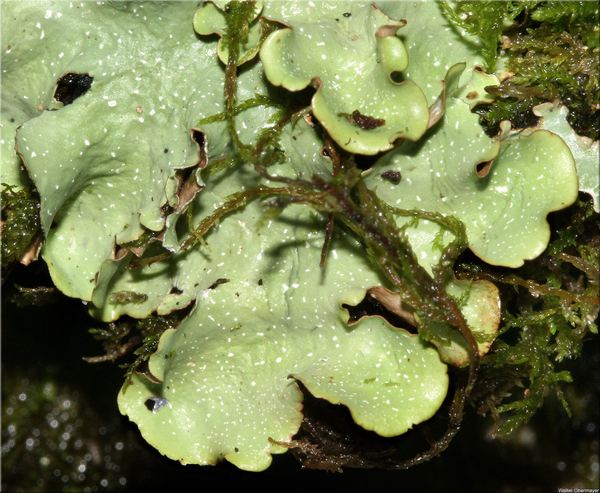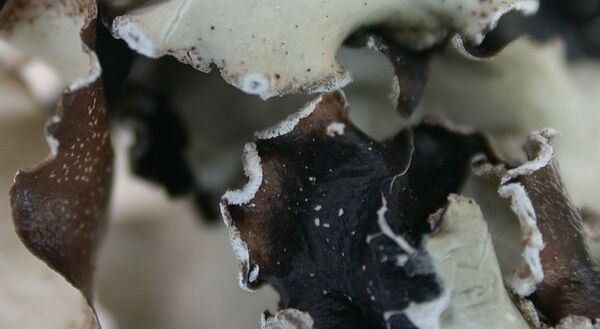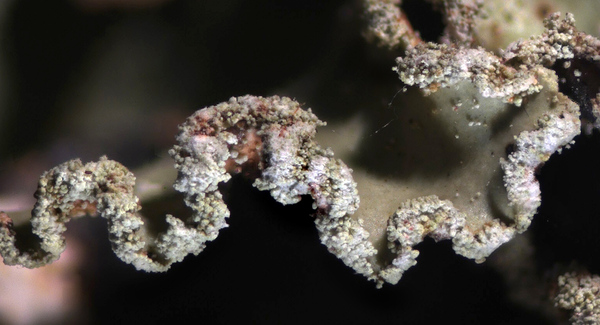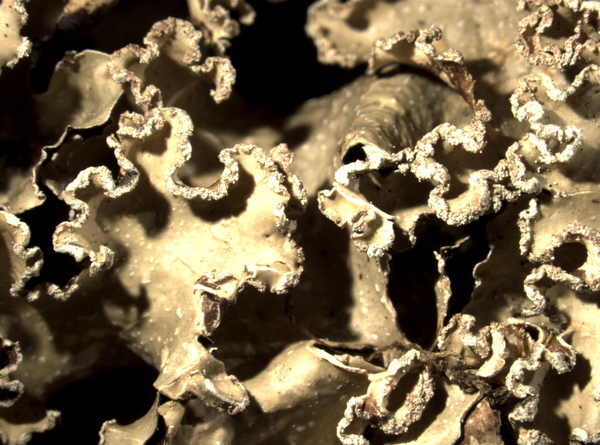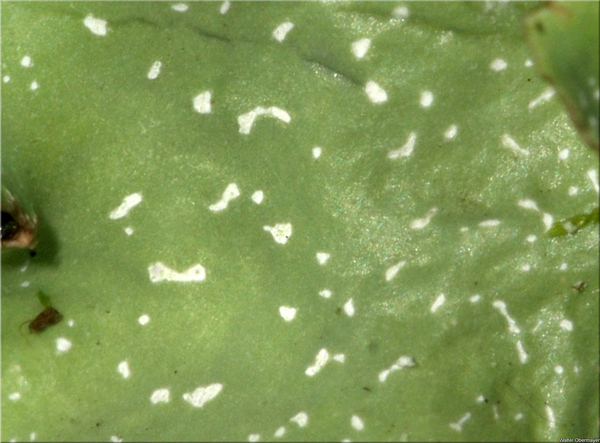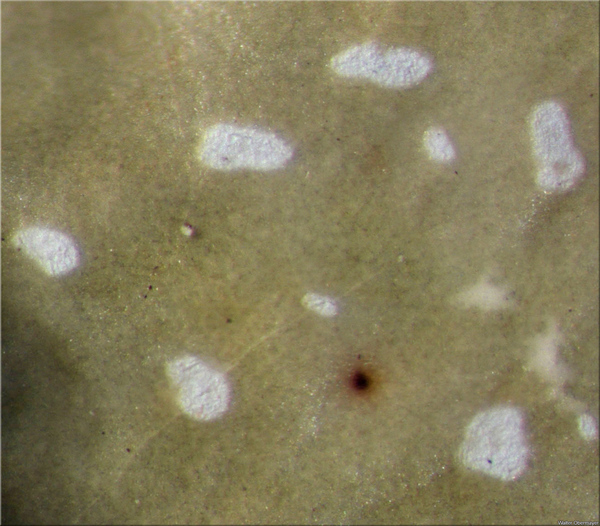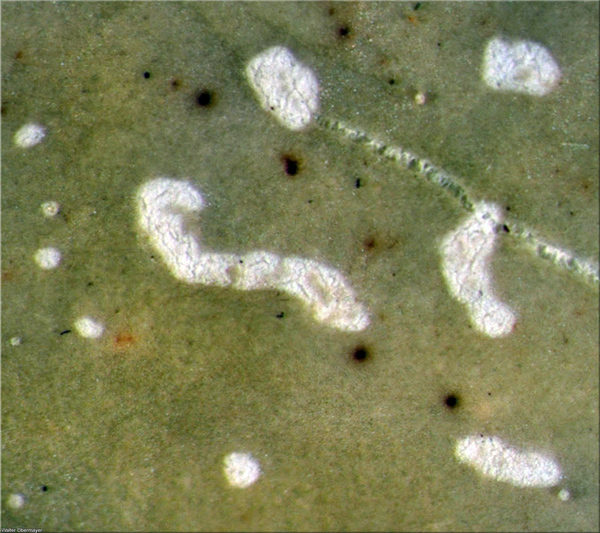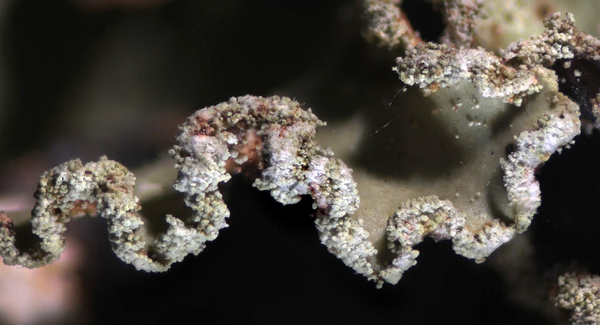Cetrelia chicitae (W.L. Culb.) W.L. Culb. & C.F. Culb.
Contr. U.S. Nat. Herb., 34: 504, 1968. Basionym: Cetraria chicitae W.L. Culb. - Bryologist, 68: 95, 1965.
Synonyms:
Distribution: N - Frl (Nascimbene & al. 2021), Ven (Nascimbene & al. 2021).
Description: Thallus foliose, broad-lobed, loosely attached, forming wavy, wide-spreading, usually orbicular patches 6-20(-40) cm across. Lobes broad and rotund, (0.5-)1-1.5(-2) cm wide, with raised margins, greenish grey (sometimes tinged brown), with punctiform pseudocyphellae on upper surface, which are rather large and usually not raised, also developed in the older, central parts of thallus; pseudocyphellae on the lower surface not developed, or appearing as very small white dots. Soralia primarily marginal on strongly twisted lobes, giving the lobe-ends a somewhat nibbled appearance, usually smooth, with coarse soredia. Lower surface black, rather regularly ridged, with scattered, simple, black rhizines and a brown, rhizine-free zone along the margin. Upper and lower cortices prosoplectenchymatous, with a non-pored epicortex, of densely agglutinated hyphae with tiny lumina; medulla white, with isolichenan, I-. Apothecia very rare, lecanorine. Asci 8-spored, Lecanora-type. Ascospores 1-celled, hyaline, ellipsoid, 12-15 x 7-10 µm. Pycnidia: unknown. Photobiont chlorococcoid. Spot tests: cortex K+ (weakly) yellow, C-, KC-, P-; medulla and soralia K+ yellow, C- or C+ faintly orange, KC+ slowly but then persistently orange, P-, UV-. Chemistry: cortex with atranorin and chloroatranorin (in lower amounts than in soralia); soralia (and medulla) with atranorin, alectoronic acid and the α-collatolic acid syndrome (including physodic acid and 4-0-methyphysodic acid). Note: according to Obermayer & Mayrhofer (2007) this is the rarest species of Cetrelia in the Eastern Alps. It was also mentioned as occurring in Italy by Hawksworth & al. (2008), but without details on sources and localities.
Growth form: Foliose, broad lobed
Substrata: bark
Photobiont: green algae other than Trentepohlia
Reproductive strategy: mainly asexual, by soredia, or soredia-like structures (e.g. blastidia)
Most common in areas with a humid-warm climate (e.g. most of Tyrrenian Italy)
Commonnes-rarity: (info)
Alpine belt: absent
Subalpine belt: absent
Oromediterranean belt: absent
Montane belt: very rare
Submediterranean belt: absent
Padanian area: absent
Humid submediterranean belt: absent
Humid mediterranean belt: absent
Dry mediterranean belt: absent
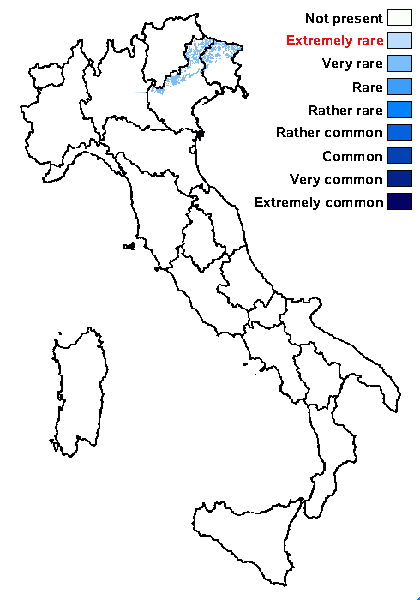
Predictive model
Herbarium samples
Growth form: Foliose, broad lobed
Substrata: bark
Photobiont: green algae other than Trentepohlia
Reproductive strategy: mainly asexual, by soredia, or soredia-like structures (e.g. blastidia)
Most common in areas with a humid-warm climate (e.g. most of Tyrrenian Italy)
Commonnes-rarity: (info)
Alpine belt: absent
Subalpine belt: absent
Oromediterranean belt: absent
Montane belt: very rare
Submediterranean belt: absent
Padanian area: absent
Humid submediterranean belt: absent
Humid mediterranean belt: absent
Dry mediterranean belt: absent

Predictive model
| Herbarium samples |
 Index Fungorum
Index Fungorum
 GBIF
GBIF
